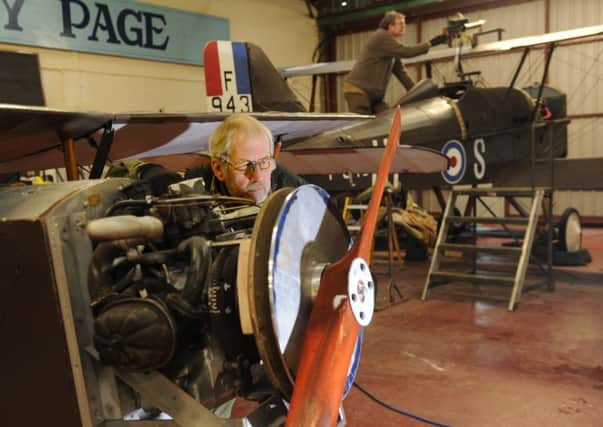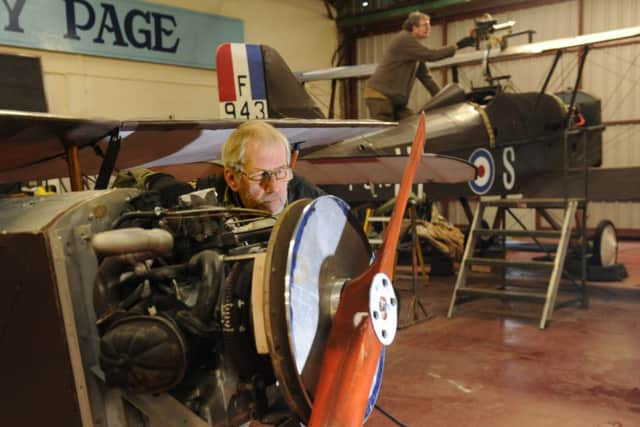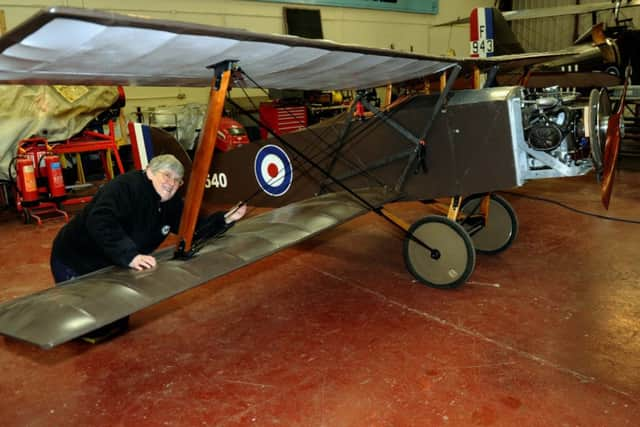‘Zeppelin zapper’ returns to life


Inside a hanger at the Yorkshire Air Museum, among a variety of other aircraft restoration projects, an Eastchurch Kitten is taking shape. The machine is rare– as only three prototypes were ever built.
Museum communications manager Ian Richardson said: “The aircraft would almost have disappeared from history had not an attempt been made in the early 1980s to essentially build one from scratch.
Advertisement
Hide AdAdvertisement
Hide Ad“However, this effort stalled and what existed in the shape of a incomplete fuselage, came to the museum in 1987. It has lain in store, awaiting its turn, in a long line of aircraft restoration projects until Spring 2011, when the green light was given to the Museum Aircraft Engineering team commence the re-build.”


Seven or eight volunteers are lovingly working on different projects in an aircraft restoration workshop at the museum near York.
Their “subjects” include a First World War SE5a replica biplane, which has been brought into “live” condition is having further work done to improve its performance; a Second World War era Avro Anson, a type that was manufactured at Yeadon, near Leeds, while work is continuing on the Museum’s replica of Amy Johnson’s Gypsy Moth, Jason.
“Restorations and reproductions such as these projects are very important as they help to preserve the nation’s design and technology heritage as well as the aircraft themselves and they result in interesting artefacts for our visitors to appreciate,” added Mr Richardson.
Advertisement
Hide AdAdvertisement
Hide AdThe Avro Anson, which first flew in March 1935, was used by the Royal Air Force and many allied air forces. After the hostilities, many were used in civilian aviation. Altogether, 3,881 Ansons were manufactured at the Avro factory, next to the site of Leeds Bradford Airport.


When the Anson arrived at the museum, it was just the framework, and it was in a poor state of repair.
Since then, much preparation work has been carried out on the shell before work on areas such as the panelling could begin.
Already, one side has largely been completed.
However, the restoration is slow and long and those involved never expect the machine to be fitted with “live” engines or move under its own power.
Advertisement
Hide AdAdvertisement
Hide AdMr Richardson added: “Aircraft come from a variety of ways, many donated, but some purchased or acquired through grant funding applications.
“Preserving aircraft such as these presents a stimulating challenge to our team of volunteers and they love to see the public enjoying the fruits of their efforts, particularly with the ‘live’ propeller driven aircraft that have been brought to ground running condition over the past two years.”
Work on the Eastchurch Kitten began in spring 2011 after the remnants had been in storage for many years.
Mr Richardson said the museum relied on volunteers, some of whom who have built up their skills from their personal interests while others come from engineering backgrounds.
Advertisement
Hide AdAdvertisement
Hide AdSome skills, he said are in danger of dying out, particularly those involved in the restoration of early aircraft, made from wood and fabric. The art of covering an aircraft with fabric and stretching and doping to tighten it is getting rarer, he explained.
The Eastchurch Kitten was conceived as a fighter that would tackle the threat posed by the Zeppelin airships which brought the War to UK shores with bombing raids in 1915.
The Kitten was to be launched from platforms on battleships, cruisers or even torpedo boats. It was to be a disposable, one-operation aircraft, to simply go up, intercept and shoot down the airship, then ditch in the sea.
However its engine was unreliable and as the threat of airships receded it was deemed unviable.
“When the Kitten becomes live, we will have seven live aircraft – four propeller and three jets. Quite an achievement for a self-supporting organisation,” Mr Richardson added.